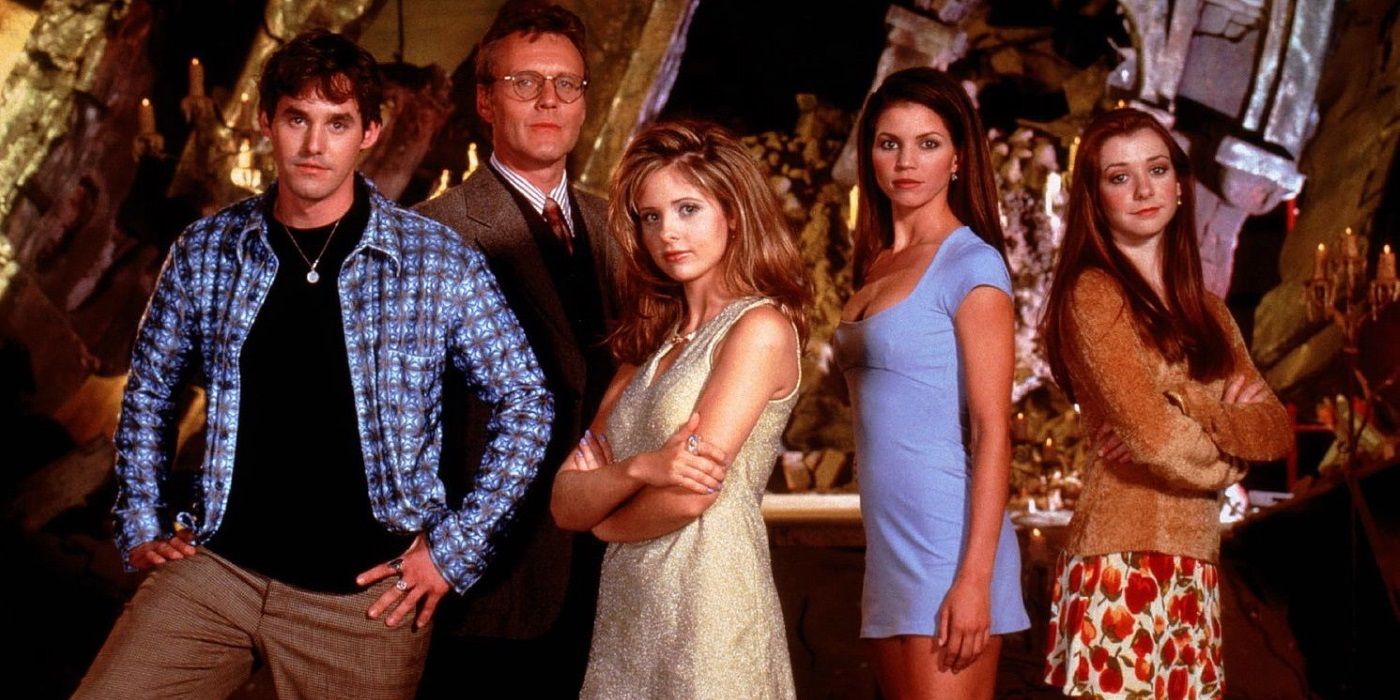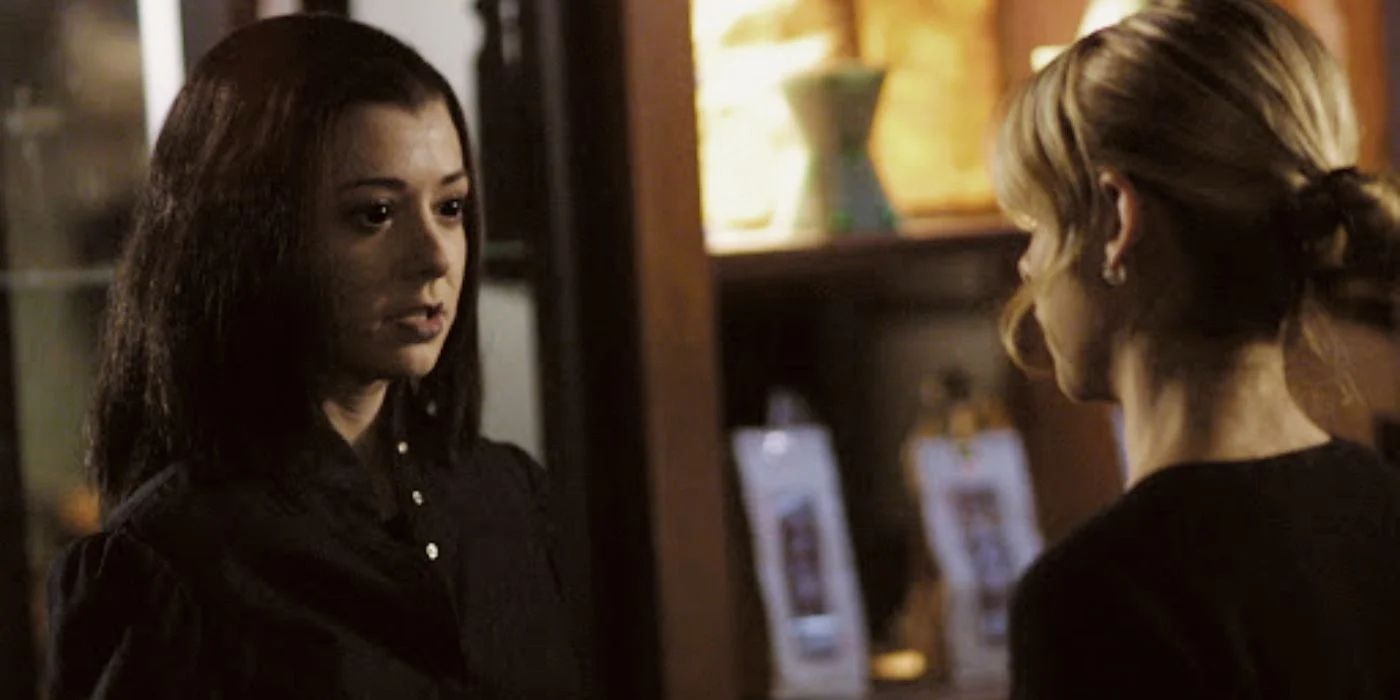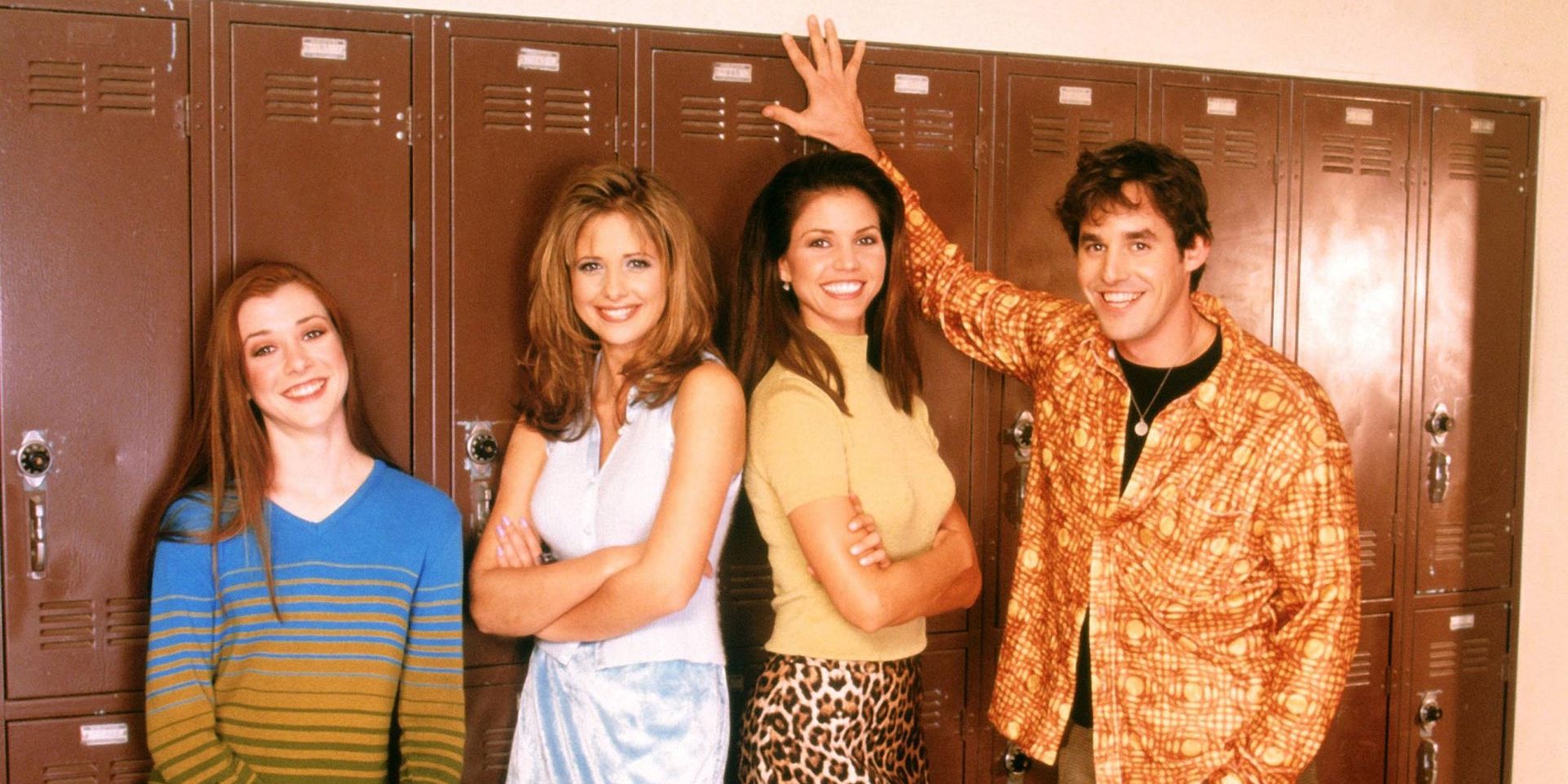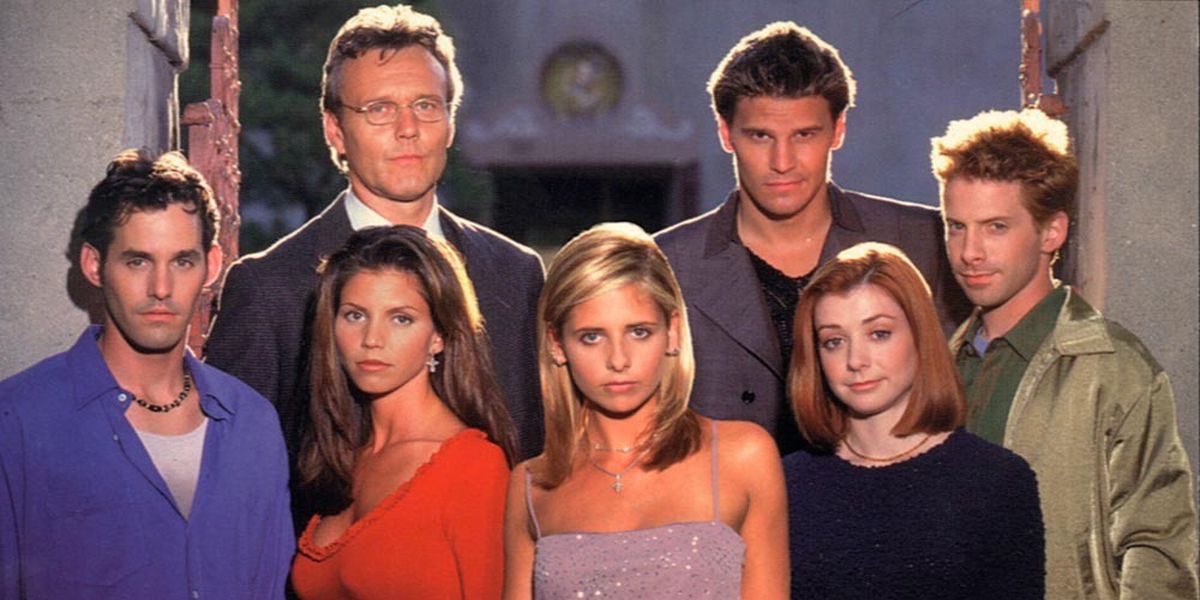Since it premiered on the WB network in March 1997, Buffy the Vampire Slayer has become an iconic show that gains new fans every year. Created by Joss Whedon and based on the 1992 movie of the same name, the show starred Sarah Michelle Geller in the title role, a high school student who becomes the Slayer, the one girl tasked with defending the world against vampires, demons and the forces of evil.
The show includes camp, horror, comedy and drama, and is at its best when the premise is balanced neatly between action set pieces and emotional character-driven beats. Below is the critics' rankings of all seven seasons of the show, from lowest to highest. Outside of Season 1, only Rotten Tomatoes provides an average for each individual season, so most of the rankings below are based on Rotten Tomatoes' aggregate scores. However, Metacritic gives the series as a whole a score of 85 and Rotten Tomatoes gives it an 82%, so, though critics felt some seasons were stronger than others, the entire show is generally well-reviewed.
Season 6 - Rotten Tomatoes Percentage: 63%
Season 6 of Buffy the Vampire Slayer starts with Buffy's friends bringing her back from heaven to resume her challenging life on Earth as the Slayer, resulting in a season-long arc that was much heavier than Buffy fans were used to. However, this season also featured the musical episode, "Once More, with Feeling," which has become a classic in its own right.
Overall, the season received a Rotten Tomatoes percentage of 63%, which is a steep drop from the series average of 82%. Critics mostly disapproved of the show's dark turn, but praised the musical episode as a standout. The season was acknowledged for its ambition, even if its execution fell short of expectations. IGN's Filip Vukcevic summed up, "Depressing though the season may be, it is also the most ambitious in its scope -- it tried to show how bad life could become, without the sugar-coating. While it may have succeeded in its nihilistic goal, it also lost that good old Buffy feel."
Season 4 - Rotten Tomatoes Percentage: 67%
In Season 4, Buffy and her friends begin life as college students at UC Sunnydale. Of course, Buffy quickly learns there are more than a few monsters on campus, as well as the monster-fighting organization, The Initiative. This is the season that Spike joins the cast full-time and Willow comes out as a lesbian. It also features the stand-out, mostly dialogue-free episode, "Hush."
Rotten Tomatoes gives the season a score of 67%. According to critics, the transition out of high school caused the show to lose a bit of what made it special in its first three seasons. It seemingly struggles to find steady footing while making the switch from the more insulated world of high school to the wider world of adult issues, with What Culture's James Hunt observing, "Overall, the season was a bit of a mess, albeit it's easy to see why." In general, critics agreed the season suffers from uneven execution with the highs being remarkable, but the lows quite dismal.
Season 7 - Rotten Tomatoes Percentage: 80%
Buffy's final season sees the return of the First Evil and the introduction of a bevy of Potential Slayers. While the middle of the season sagged under the weight of too many new characters and not enough of the beloved Scooby Gang, the series finale is still a highlight.
The season received generally positive reviews with a score of 80% on Rotten Tomatoes. The critics especially praised the finale, with David Bianculli of New York Daily News calling it "one of the most satisfying series finales in years." On the other hand, Vulture's Sarah D. Bunting observed, "You can violate the laws of the universe you created, using a raft of new characters in whom we have no investment, or you can drag nine episodes’ worth of doing so over 22 hours of TV. Not both. Season 7 did both..." Yet, many critics seemed to grow philosophical about the series as a whole in its final season, with more than one calling it a work of art.
Season 5 - Rotten Tomatoes Percentage: 82%
Season 5 saw the introduction of Buffy's younger sister Dawn, the mystical key who's being hunted by Hell-God, Glory, the season's Big Bad. The season also featured the devastating episode, "The Body," one of the most honest portrayals of grief ever captured on TV.
The season earned an 82% on Rotten Tomatoes which is also the series average. Although some critics were jarred by the introduction of Dawn and weren't fans of the execution of Glory's arc, critics were generally enthusiastic about the season. Noel Murray of The A.V. Club called it, "A weird, daring, beautiful season." And PopMatters' Andrew Gilstrap said, "'The Body' is possibly the finest hour of television I've seen, bar none."
Season 1 - Average Score: 86
The first season of the show begins with Buffy moving with her mother to Sunnydale. There, she meets her Watcher, Giles, and her new besties, Xander and Willow, and resumes her Slayer duties after learning Sunnydale sits on top of a Hellmouth. The season establishes the show's smart approach of using demons as metaphors for the horrors of high school.
Season 1 has a Metacritic score of 80 and a Rotten Tomatoes score of 92% for an average of 86. Critics agree that the series starts off on a strong foot, but note that the villains aren't particularly memorable and the special effects aren't especially convincing. A majority of the praise goes to Sarah Michelle Gellar and Joss Whedon's writing, with Steve Johnson of the Chicago Tribune noting, "the devilishly clever, culturally hyper-attuned dialogue is what makes [the show] stand out."
Season 2 - Rotten Tomatoes Percentage: 91%
Season 2 of Buffy the Vampire Slayer sees Buffy and Angel consummate their relationship, leading to Angel losing his soul and becoming the monster Angelus. It's also the season that introduces Spike and Drusilla, as well as the ill-fated Slayer, Kendra. And at the end of the season, Buffy's mother finally learns what's really been going on with her daughter, a revelation she doesn't handle very well.
According to critics, Season 2 is the second best of the series, with a Rotten Tomatoes score of 91%. James Donaghy of The Guardian noted that Season 2 is "where the show fully hits its stride," a sentiment found in a majority of reviews for the season. Meanwhile, Vulture's Sarah D. Bunting observed, "Season 2 is where Buffy best balances Buffy's save-the-world destiny and just-fit-in daydreams without letting her descend into pouty self-pity."
Season 3 - Rotten Tomatoes Percentage: 100%
Buffy's third season coincides with Buffy's senior year in high school. It introduces "bad" slayer, Faith, who eventually aligns with Sunnydale Mayor Richard Wilkins, a long-lived baddie working toward his ascension to full demonhood, scheduled for Sunnydale High's graduation day. The season is full of fan-favorite episodes, including "The Wish,""The Zeppo,""Doppelgangland" and "The Prom," and ends with Buffy and the Scooby Gang recruiting the whole senior class to fight the mayor in the two-part season finale.
Season 3 has a perfect score of 100% on Rotten Tomatoes, with critics noting that it has the advantage of two previous seasons establishing its world and relationships, leading to it becoming even more self-assured and fully realized in its third season. Critics were especially impressed with the season's ability to balance its various elements, including high school drama, romance and supernatural horror. Entertainment Weekly's Ken Tucker wrote, "Give series creator Joss Whedon credit: No other show balances so many elements as deftly, without a trace of corniness or melodrama."








